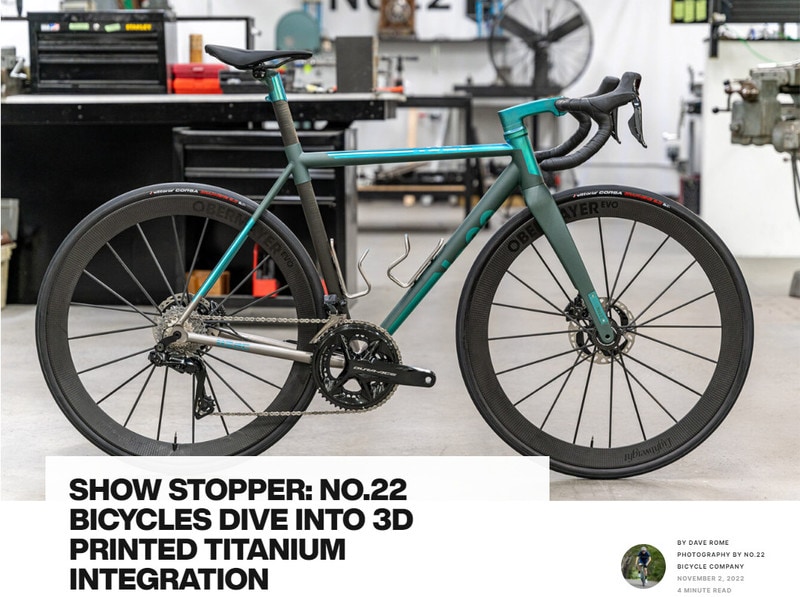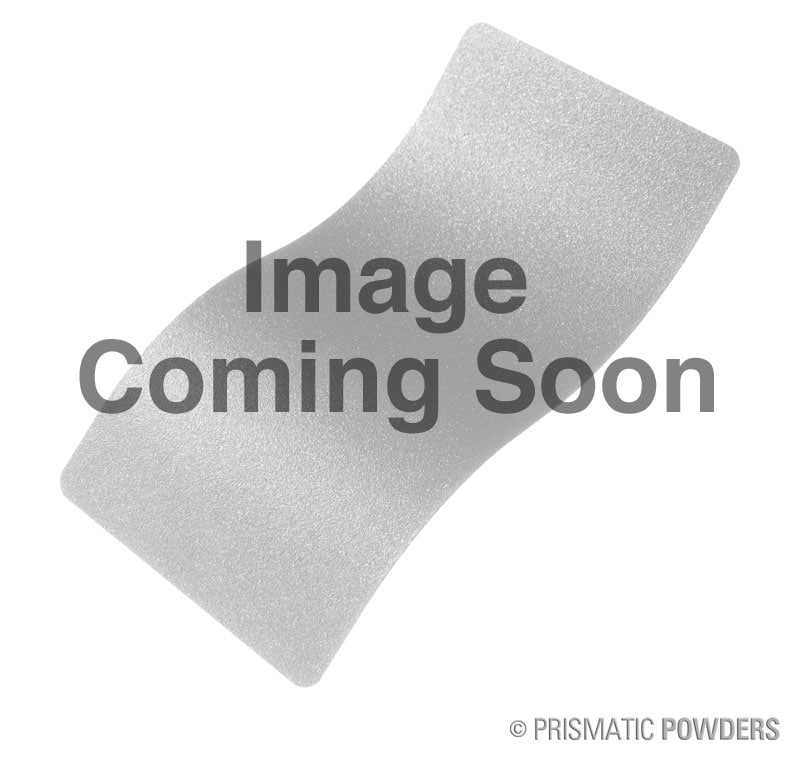
No. 22 Bicycles Chooses Cerakote as First Choice in Finish Alternatives

Sometimes it feels like No.22 can’t attend a custom bike show without walking away with an award. Over the weekend at the Philly Bike Expo, the custom titanium bike company from Johnstown, upstate New York was at it again, revealing the stunning Aurora road bike – a bike that earned a People’s Choice award. This titanium road bike with a carbon seat tube served as a showcase for several new optional updates that No.22 has been busy honing. These include an integrated front end, 3D-printed titanium components, and new in-house finishes. To me, these updates show where many custom frame makers are likely headed. That’s if the customer wants them, of course – No.22 will happily still make a bike with external cabling and simpler finishing. Related to this announcement, we caught up with No.22’s co-founder Bryce Gracey to chat about the tech, geometry concepts, titanium bike demand, and much more. This conversation will be published as a CyclingNerd Alert podcast episode later this week. In the meantime, enjoy the bike. Additive manufacturing is addictive The freedom to create unique shapes in small (or singular) batches means using 3D-printed titanium is fast becoming a commonplace feature in higher-end custom bikes. In the USA, the likes of Moots and No.22 have been dabbling in the space. In the UK, it’s Sturdy Cycles and Atherton Bikes. In Australia, it’s found in bikes from Bastion, Prova, Baum, Mooro, and Sugarloaf. No.22 only recently started welding 3D-printed dropouts into its dropper disc brake bikes, but has now greatly expanded on that with the manufacturing assistance of Silca. Now No.22 is offering its own concealed cabled front end as an optional extra for any of its disc-equipped dropbar bikes. Their approach is rather intricately detailed and starts with a bespoke 3D-printed titanium stem that holds any handlebar with suitable internal cable routing. That stem is currently being produced in ‘stock’ lengths from 80 – 120 mm with 10 mm increments, and is claimed to weigh 170 grams for a 110 mm model. The stem offers hidden faceplate bolts, clean steerer tube clamping, and guided pathways for the brake hoses. Those guided pathways sit amongst a rather interesting-looking internal lattice structure with an unexpectedly organic flow to it. “A few friends in the medical industry tell me how much it looks like the structure of bone, specifically the birds of bones,” noted Gracey. From there, the brake hoses are routed through No.22’s own headset spacers which are CNC machined from titanium billet and then cut into two via a EDM wire-cutting process. As far as headset spacers go, these details are next-level. Beneath those headset spacers hides a Token headset assembly that is based on the use of 1.5” headset bearings top and bottom – it’s the same design as found in the new Enve Melee, among a few other bikes. That oversized headset is situated within a new custom machined head tube with integrated bearing seats. That headset holds onto a fork from No.22’s sibling company – No.6 Composites. The company now has new road and gravel forks that offer increased tyre clearance, better cable integration (if you want it), and greater headset compatibility. You can spot these forks via the scalloped lower carbon leg that has a 3D-printed titanium badge bolted in place. You’ll also find the company’s forks on bikes from Firefly and Australian builder Mooro. Elsewhere you’ll find No.22 using 3D printed titanium in its dropouts, something it claims not only provides a more seamless aesthetic but also offers worthwhile alignment benefits during production. Their dropouts feature subtle fender mount integration, can be used with either direct-mount or standard hangers, and have internal wiring for Di2. Lastly, the company now has 3D-printed titanium seatpost toppers available for its Aurora road and Drifter X gravel bikes, something that hides that same organic-like lattice as its stems. And to add a little extra, No.22 has recently started working with Australian fastener company Prototipo to offer custom-designed hardware across the frame for an optional extra. These printed parts are said to go through a hardening process that brings the material properties closer to one machined from billet. According to Gracey, this hardening process makes the components so difficult to shape and finish that they now do the finishing before returning the product to a facility near Silca headquarters in Indianapolis for the hardening process. Soon to be known for its Cerakote finishes Recent years have seen No.22 pump out some truly breathtaking bicycles, many of which feature anodisation done in-house. “We’re known for our anodised finishes on our bikes. The problem is it’s not a dye-based process, there’s no pigment and it’s all about how light refracts off the surfaces,” said Gracey during our soon-to-be-published podcast episode. “As soon as you put clear-coat on that, if you’re integrating paint into the finish, it changes the way it looks, it loses its lustre and changes how it looks. You can stop the paint before the anodisation but then you’re left with a hard clear coat edge.” That issue led No.22 to look into alternatives to traditional paint which would more easily match up to the company’s in-house anodisation. It didn’t take long for the company to settle on its first choice – Cerakote. “We’ve now got a booth in-house, and we’ve been experimenting with different systems. [Cerakote] is a ceramic coating – it’s super durable, is about 1/20th of the weight of paint, and doesn’t need a clear coat.” While most would associate Cerakote with matte and often flat-looking colours, No.22’s approach combines newer metallic Cerakote finishes with bead blasted and polished titanium. “Many of the colours we’re using have a metallic flake in them. It gives a nice transition between the reflectivity of these materials. It’s richer and more vibrant than how Cerakote started.“ The combined anodisation and Cerakote finishes are optional extras with No.22’s bikes, and carry an approximate US$1,500 premium, a figure that’s competitive to a painted finish.
Added To Cart


{{ itemJustAddedToCart.product.name }}
Amount:
{{ pricePerUnit }}
/unit
Quantity:
{{ data.quantity.value }}
{{ data.quantity.unit }}
{{ itemJustAddedToCart.product.name }}
Swatches are aluminum panels sprayed with Cerakote for DEMONSTRATION AND COLOR REPRESENTATION PURPOSES ONLY. If you desire a testing sample please contact us at info@cerakote.com If your order contains an "Out of Stock" swatch, we will create that swatch for you, then ship your entire swatch order. This can take up to two weeks.
If all swatches are IN STOCK it will ship in 1-3 business days via 2nd Day Air.
Items are Added to Your Cart

